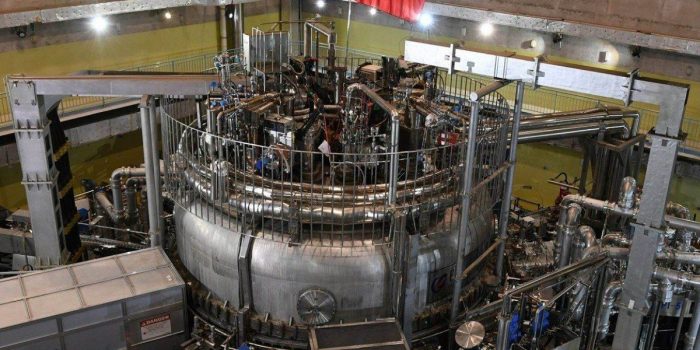In a ground-breaking accomplishment, researchers at the Oak Ridge National Laboratory (ORNL) used a tokamak, a device used for nuclear fusion research, to reach record-breaking temperatures. The mechanism that powers the sun, nuclear fusion, has immense promise as a clean, nearly infinite source of energy that produces no long-lived radioactive waste or greenhouse gas emissions.
The necessity for high temperatures and pressures, plasma instability, cost, scalability, and energy balance are just a few of the difficulties that fusion energy has had to overcome, but researchers have made great progress in recent years.
Tokamaks, which utilize magnetic confinement fusion, have been instrumental in fusion research. These devices employ a powerful magnetic field to control and contain the superheated plasma, enabling fusion reactions to occur. The ST40 tokamak, specifically, is notable for its compact size and spherical plasma configuration.

In this study, scientists focused on refining the operating conditions of the ST40 tokamak. By using a toroidal magnetic field slightly above 2 Tesla and employing high-energy neutral particles to heat the plasma, they achieved remarkable results. Although the fusion reactions occurred for just 0.15 seconds, the ion temperatures in the core surpassed 100 million degrees Celsius.
To measure the ion temperatures accurately, the team employed the TRANSP transport code, which considers temperature profiles of impurities and deuterium—the primary fuel used in fusion reactors. The measurements revealed ion temperatures exceeding 100 million degrees Celsius for impurities and deuterium.
This significant achievement provides renewed optimism for the future development of fusion power plants based on compact high-field spherical tokamaks. By reaching ion temperatures relevant to commercial fusion, these advancements pave the way for more efficient and economically viable fusion energy solutions.

The successful production of temperatures exceeding 100 million degrees Celsius in the ST40 represents a milestone for compact high-field tokamaks. Previously, such temperatures had only been achieved in larger devices with greater plasma heating power. The results also indicate a fusion triple product—a key parameter for fusion performance—of approximately 6±2 x 1018 m-3 keVs.
With continued progress in fusion research, the potential for sustainable and clean energy generation becomes increasingly promising. The ability to achieve and sustain high temperatures in compact devices brings us one step closer to unlocking the vast potential of fusion energy and creating a greener future for our planet.


